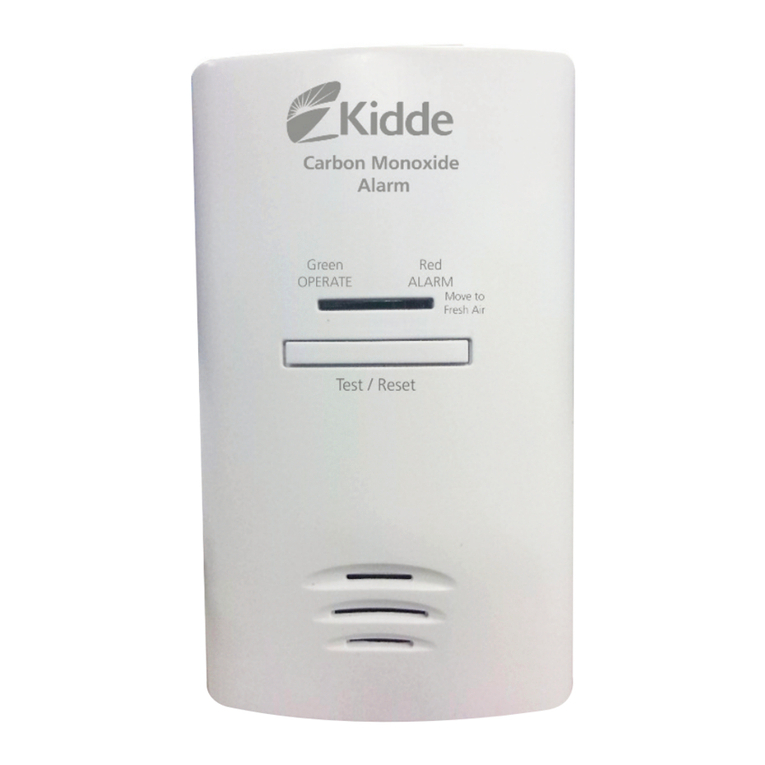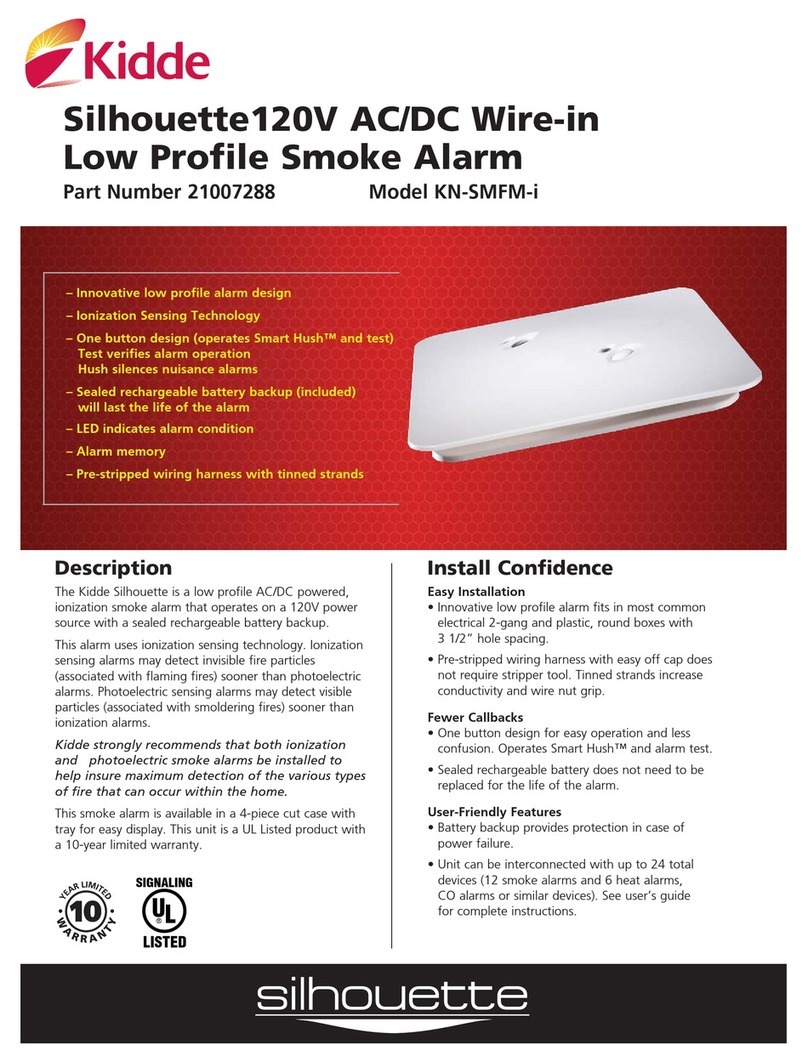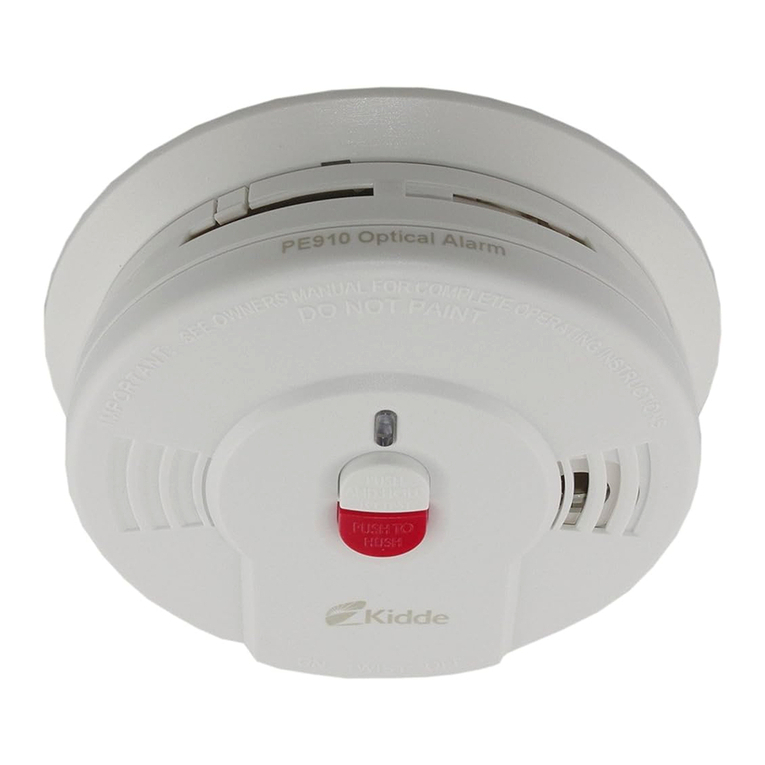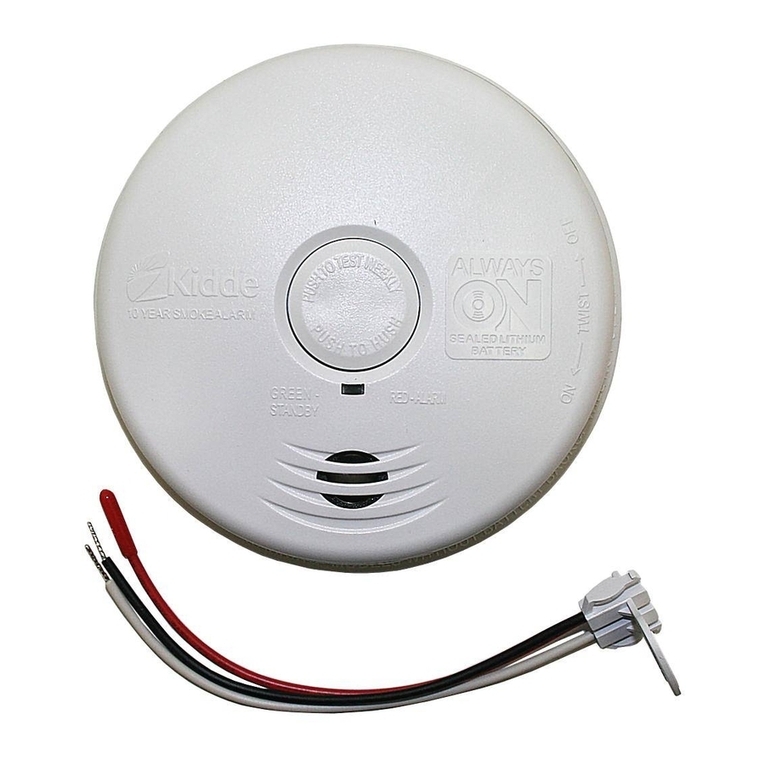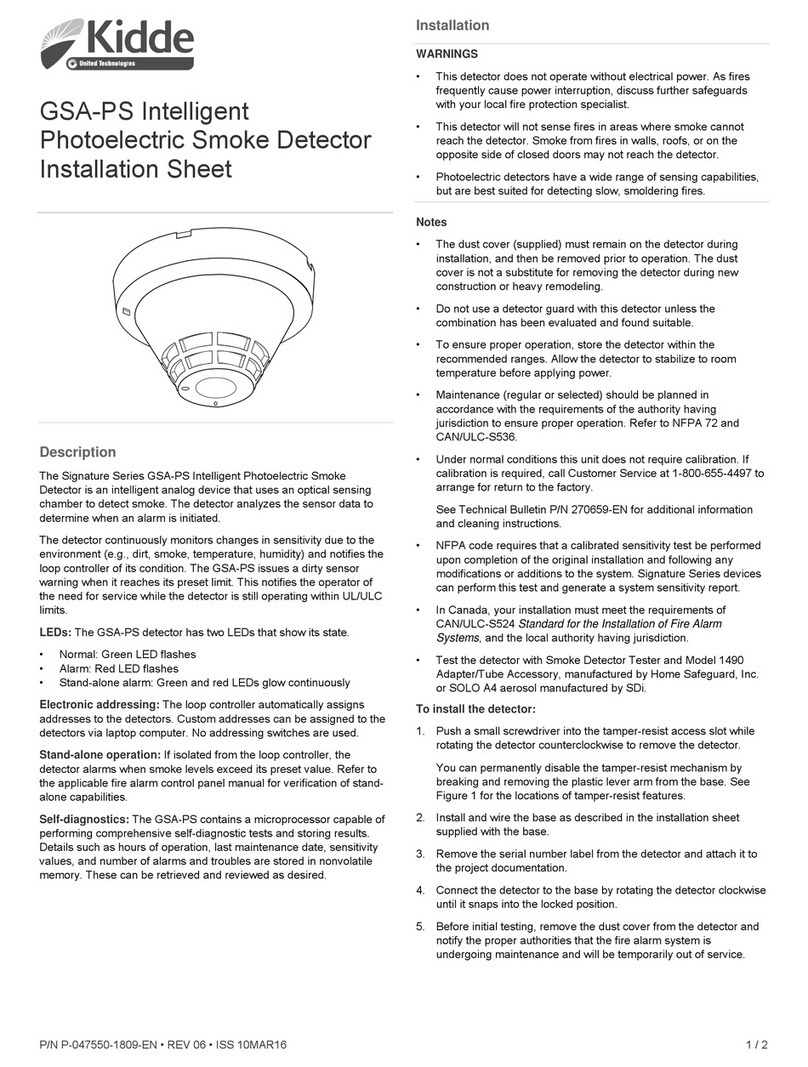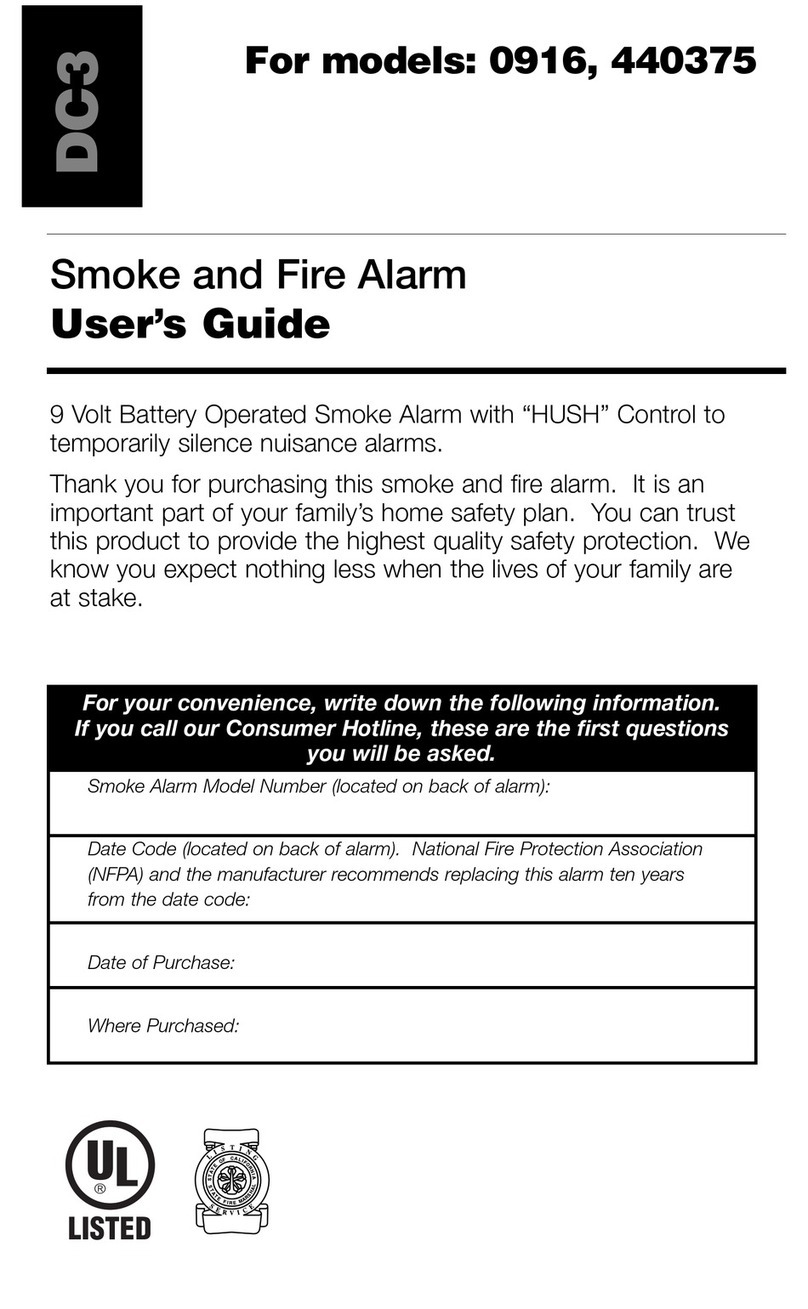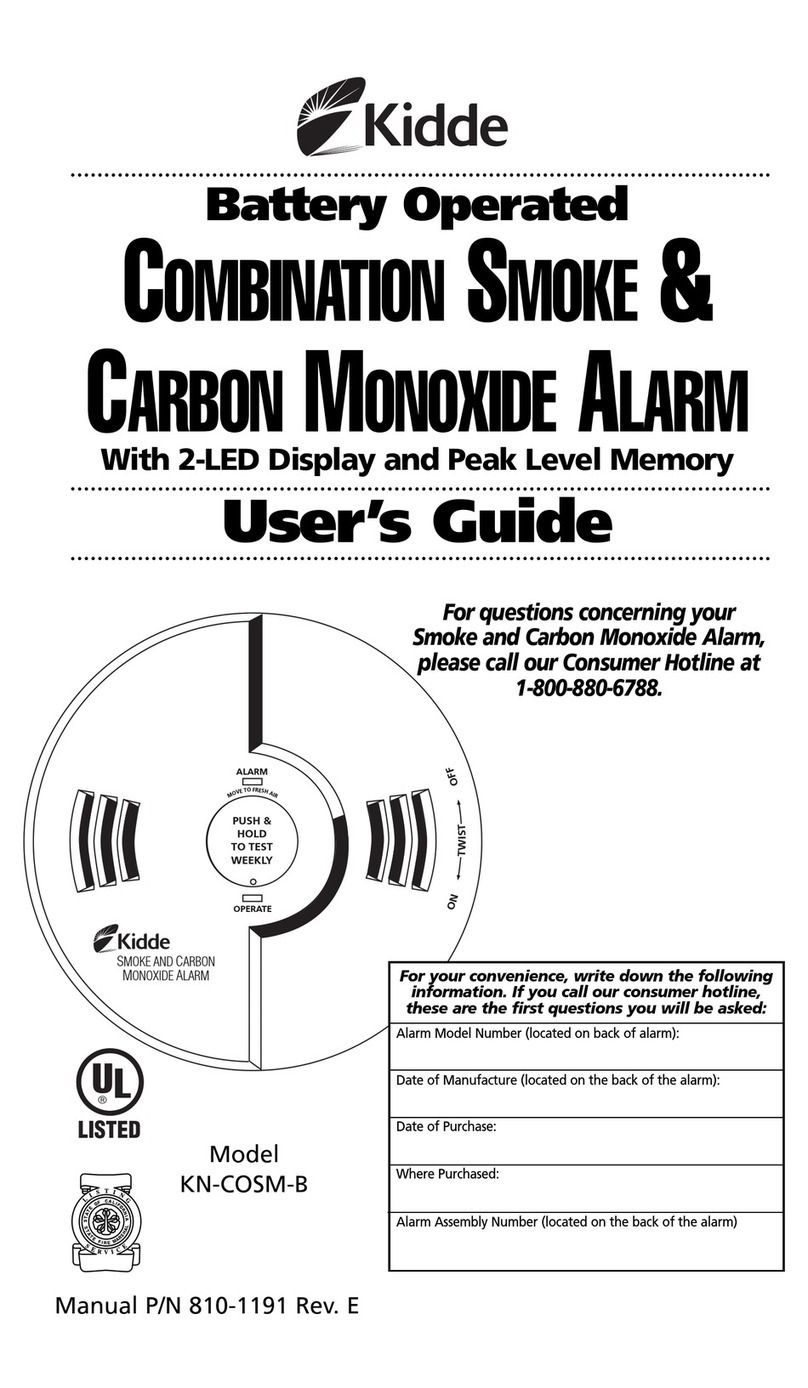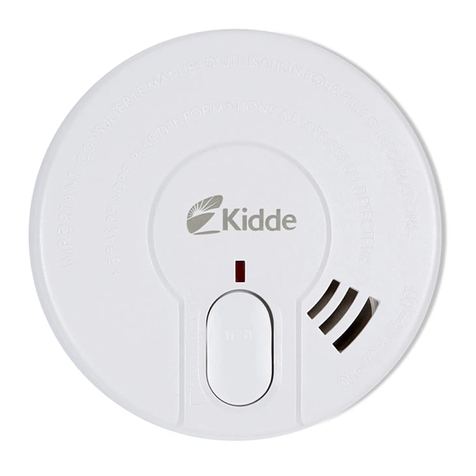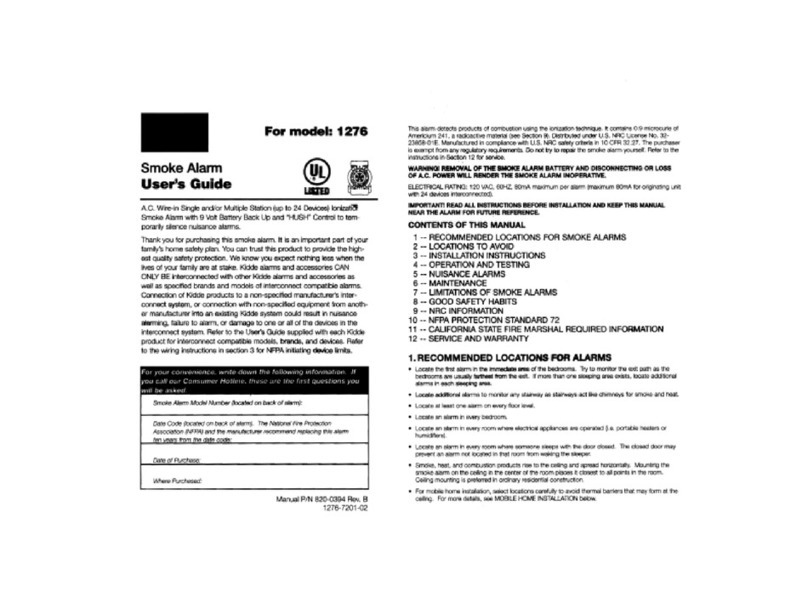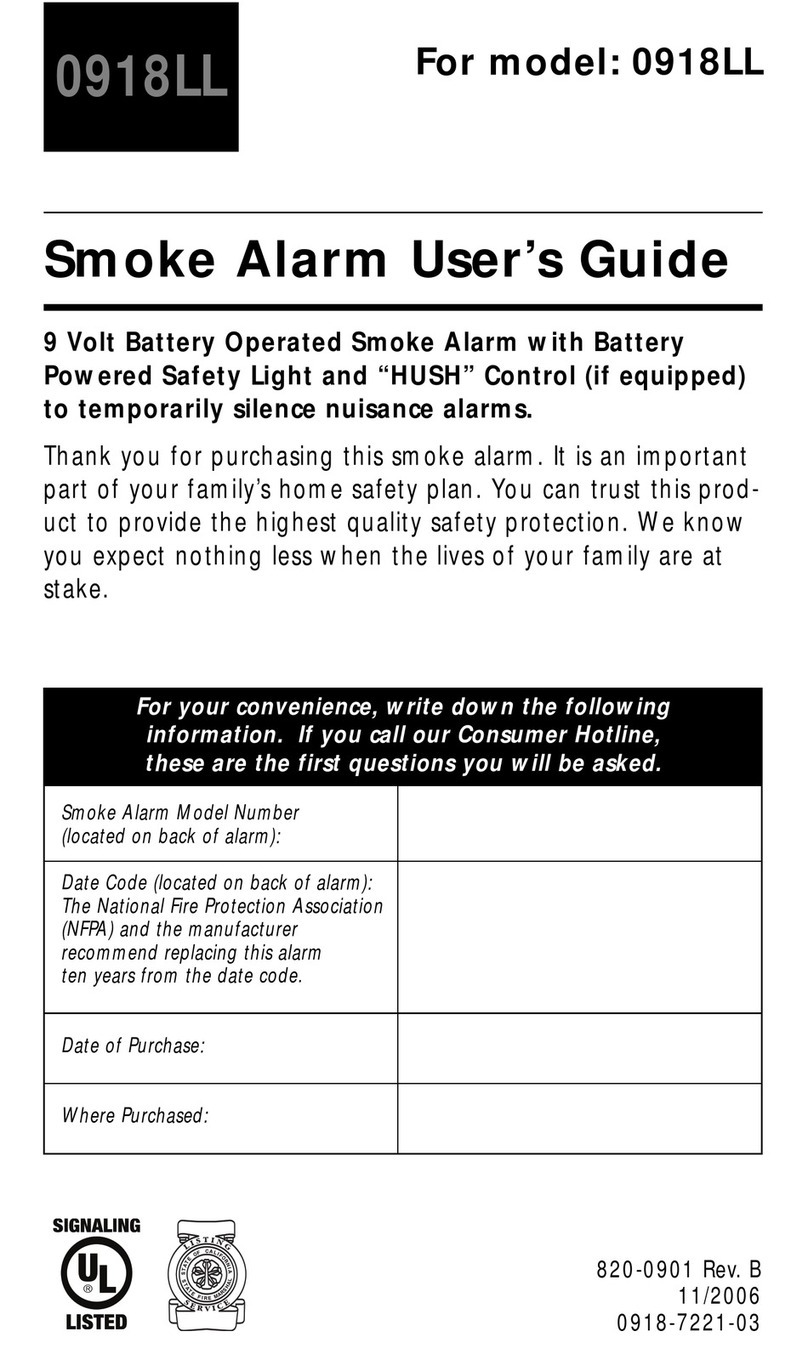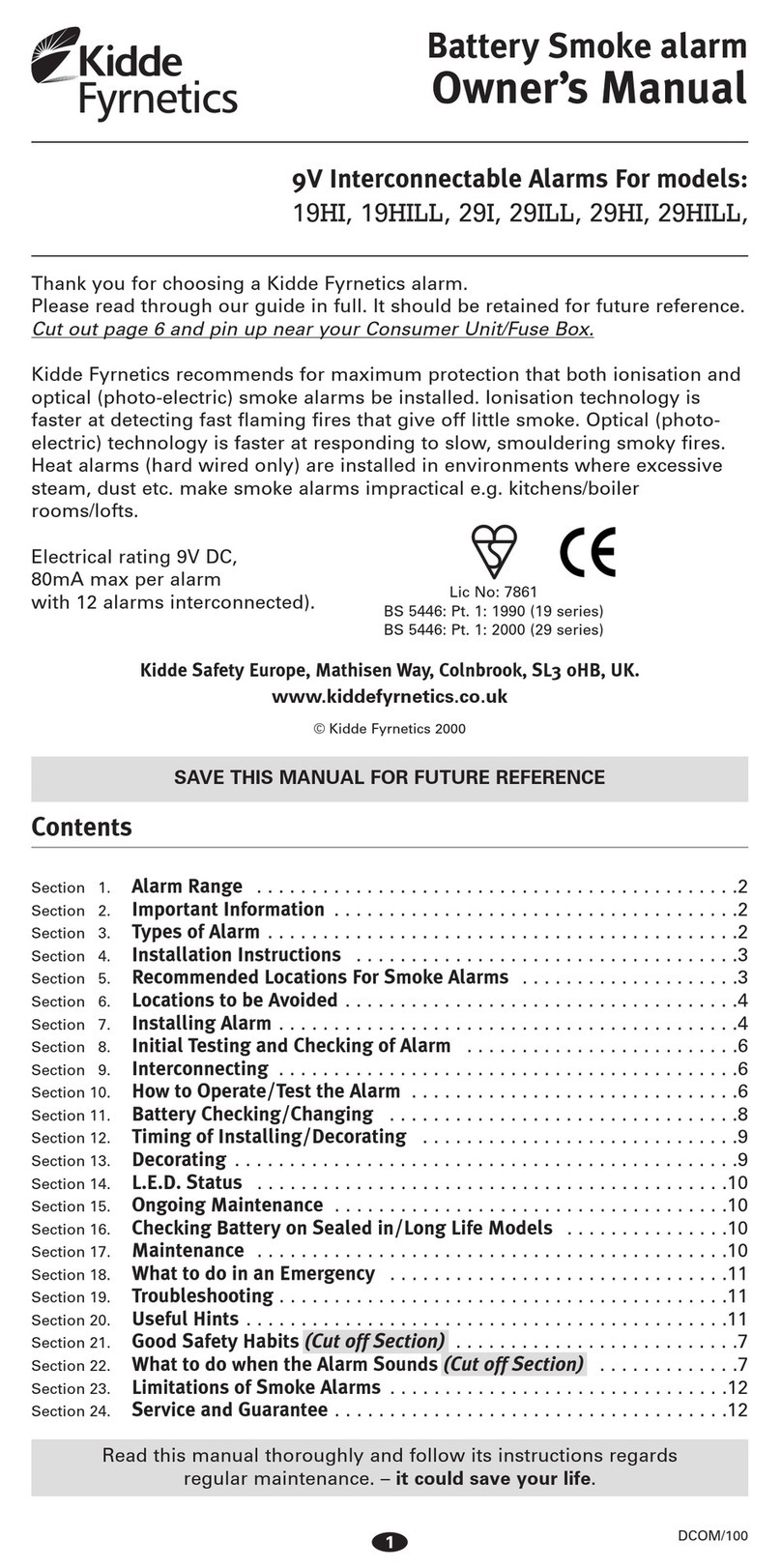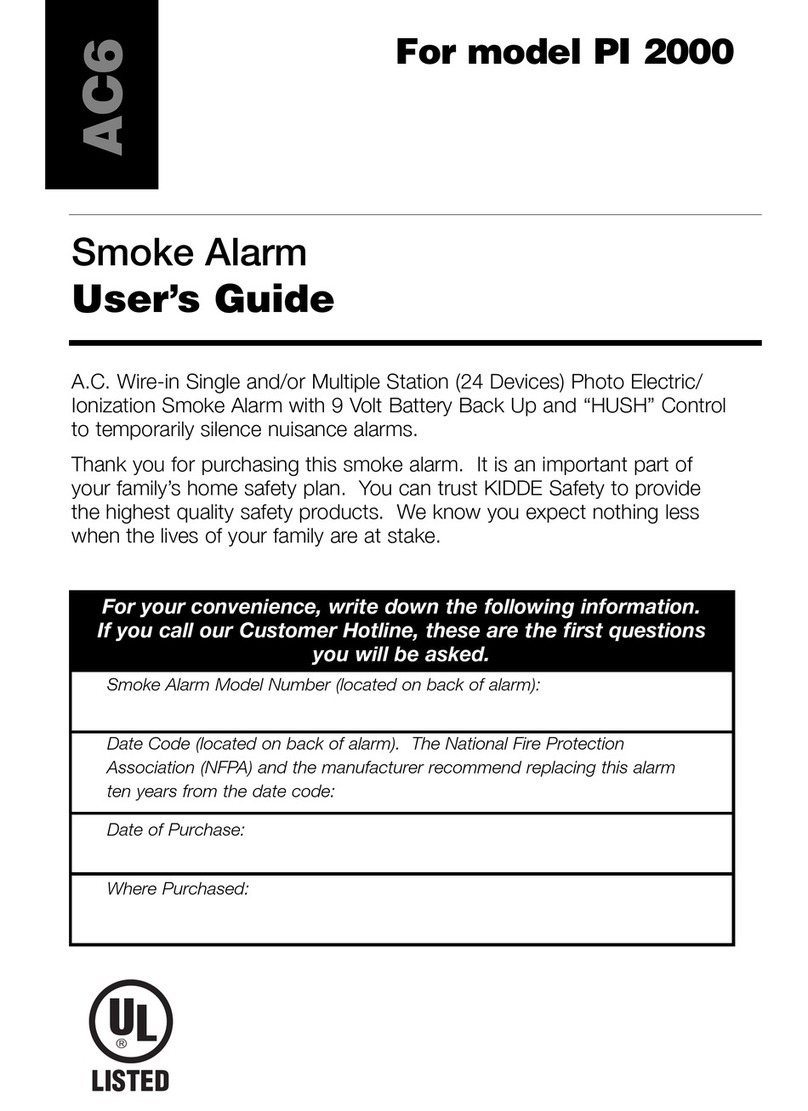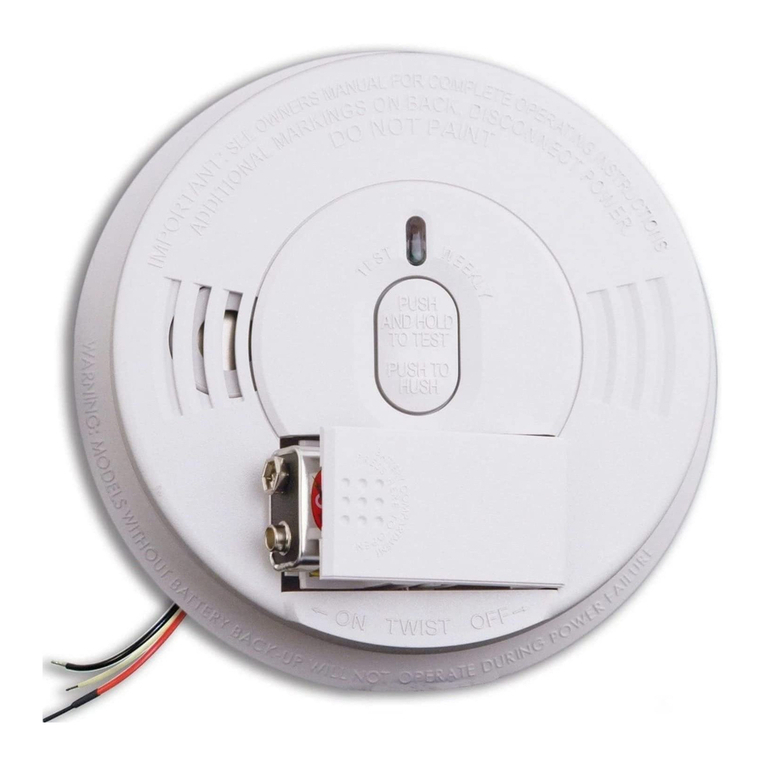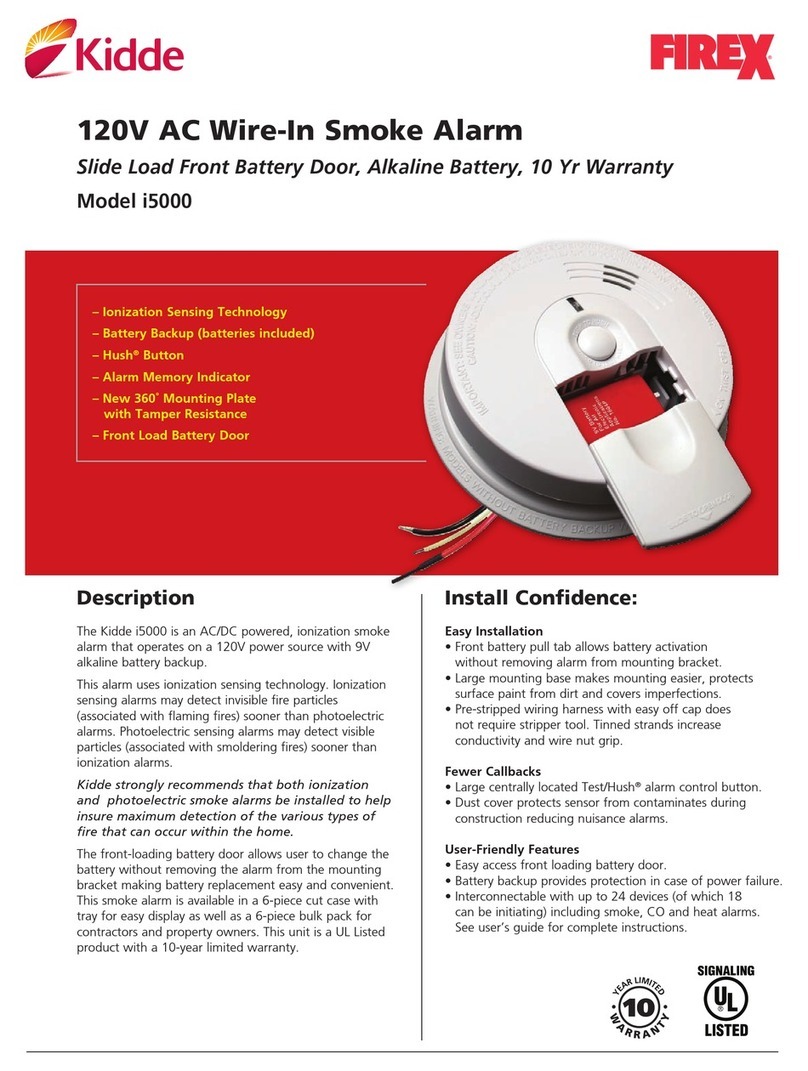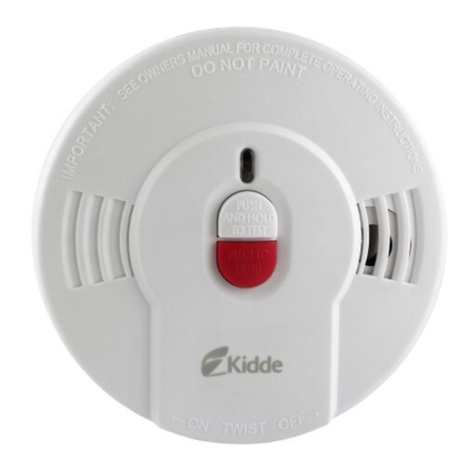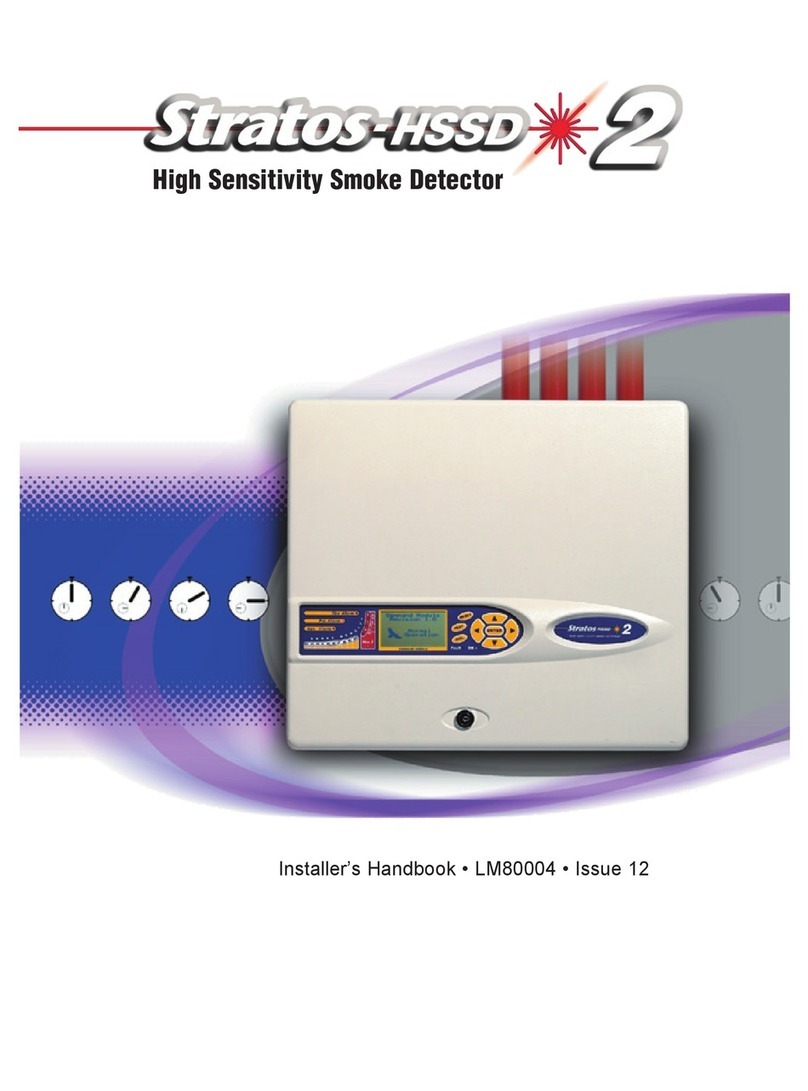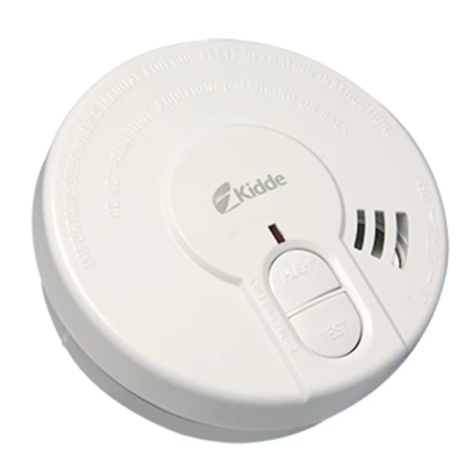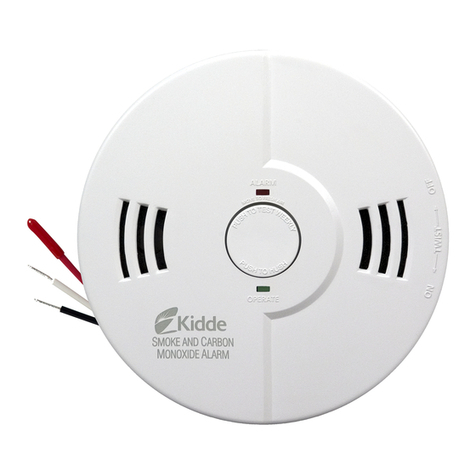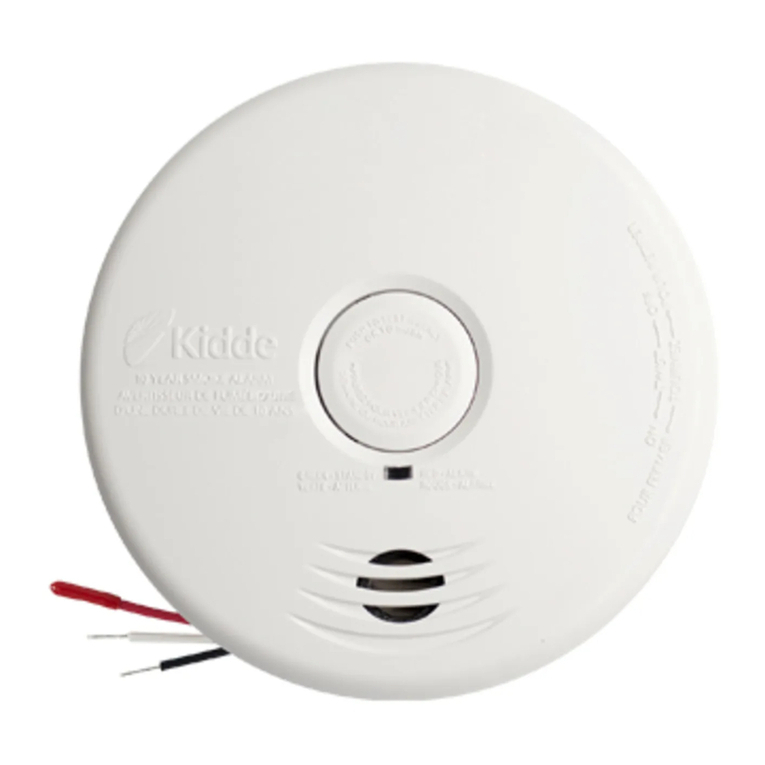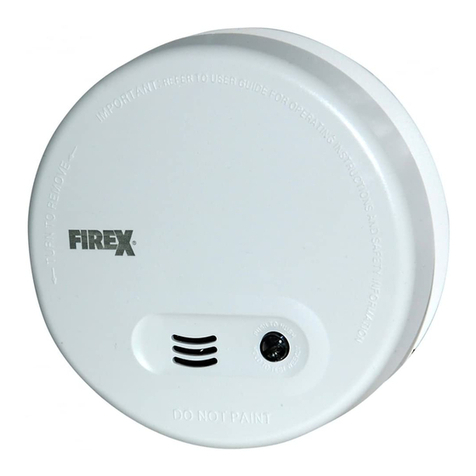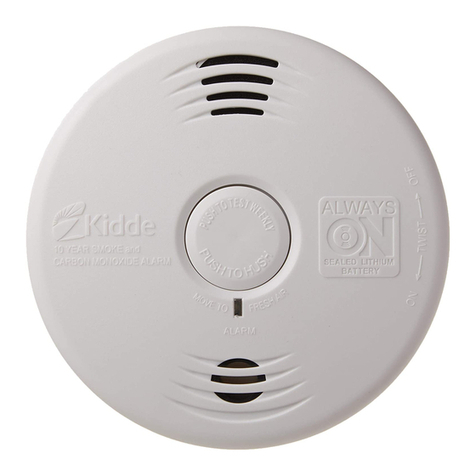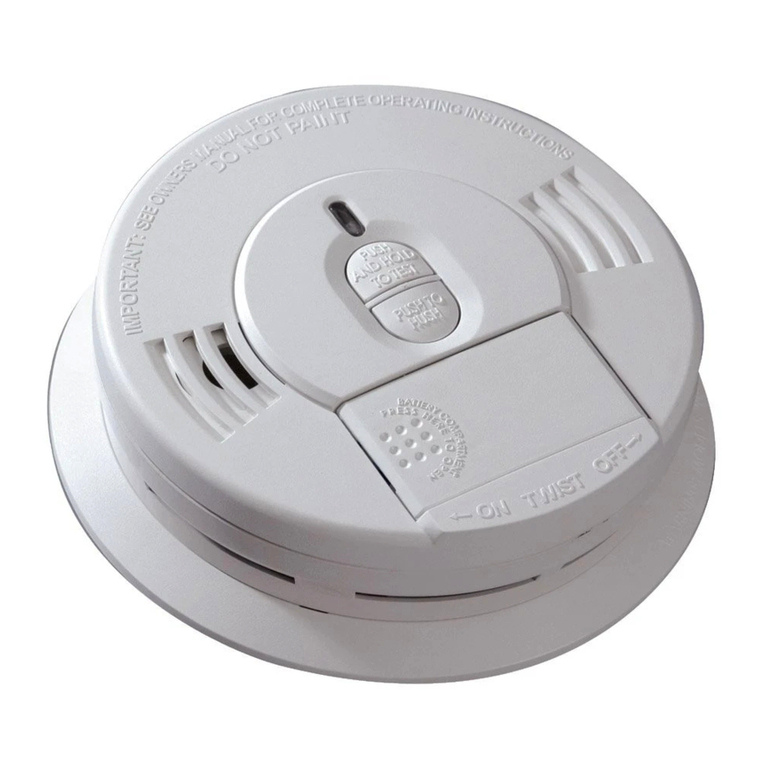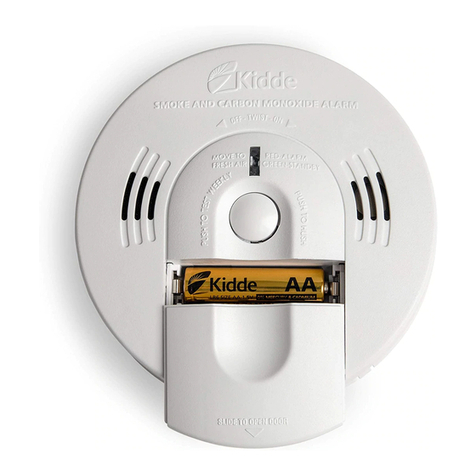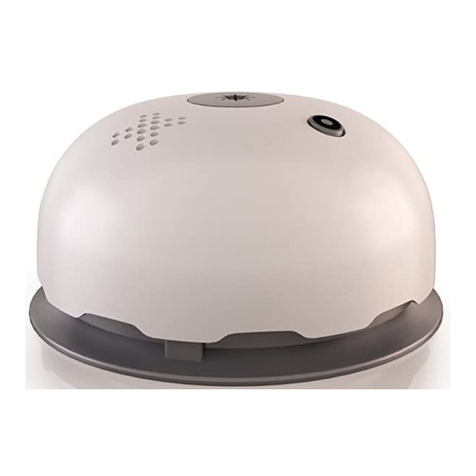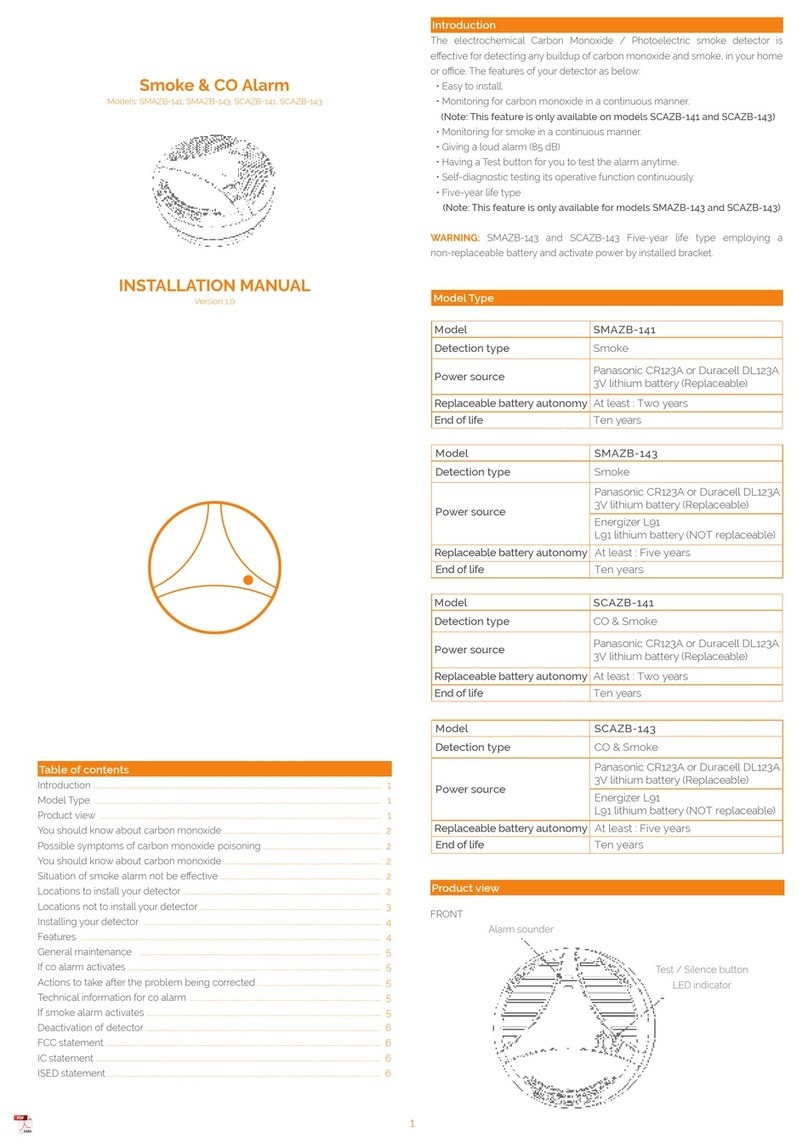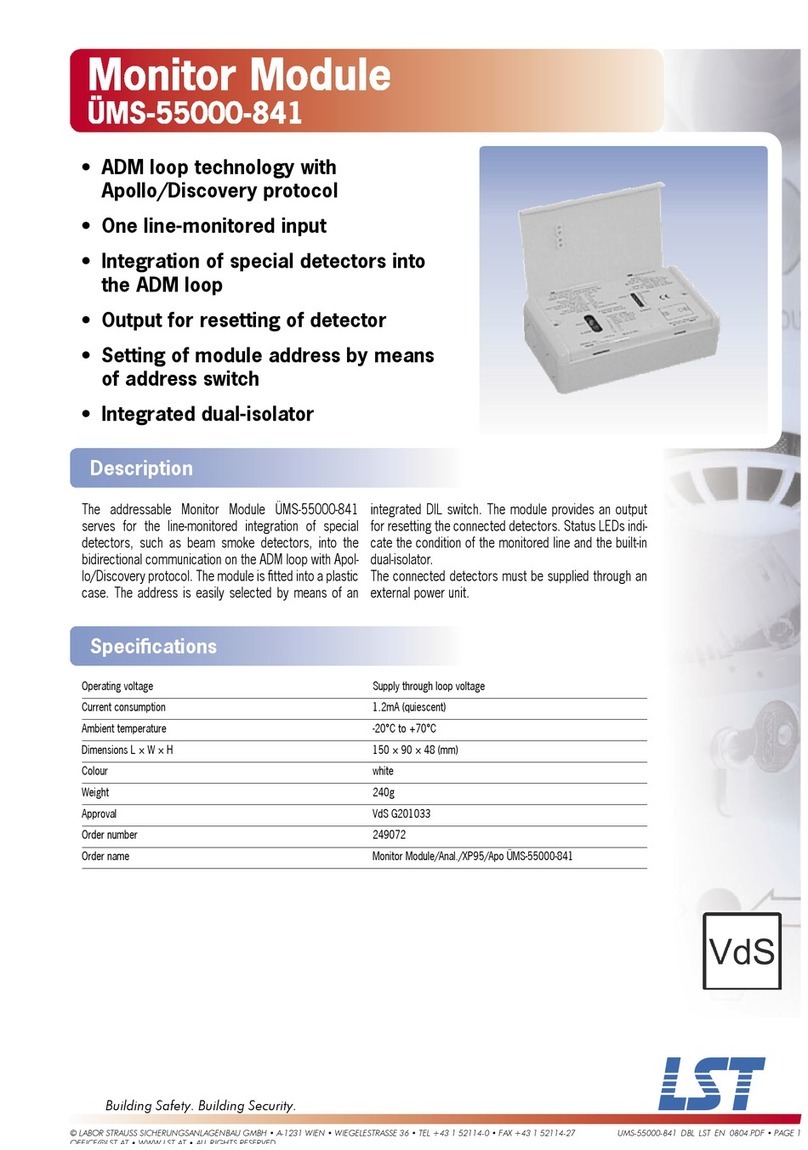
7
4. Troubleshooting Guide
If you require further information please contact Product Support at 1-800-880-6788 or write us at:
Kidde, 1016 Corporate Park Drive, Mebane, NC 27302. Our internet address is www.kidde.com.
Trouble Condition Visual Indications Audible Indications Action
Low Battery Amber LED blink
every 60 sec.
Chirp and voice “Replace
alarm” every 60 sec. (After 1
hour, voice occurs only once
every 15 mins)
Voice “Hush mode activated”
after button push (rst 7 days
only).
* Push button once to silence for
24 hrs. (Push button again to clear
Hush and perform a test.)
Note: 7 days after Low Battery
begins, the notications cannot be
silenced.
* Remove, discharge, dispose unit,
and replace as soon as possible.
Fault: Smoke Sensor
Error
Amber
LED blinks
every 30 sec.
Chirp every 30 sec, voice
“Smoke Sensor Error” every 60
sec. (After 1 hour, voice only
after button is pushed.)
* See Cleaning Your Alarm section.
* Push button once to attempt to
reset the unit.
* If error continues, remove,
discharge, dispose unit, and replace
as soon as possible.
Fault: CO Sensor
Error
Chirp every 30 sec, voice “CO
Sensor Error” every 60 sec.
(After 1 hour, voice only after
button is pushed.)
* Push button once to attempt to
reset the unit.
* If error continues, remove,
discharge, dispose unit, and replace
as soon as possible.
Fault: Memory Error Chirp every 30 sec, voice
“Memory Error” every 60 sec.
(After 1 hour, voice only after
button is pushed.)
* Push button once to attempt to
reset the unit.
* If error continues, remove,
discharge, dispose unit, and replace
as soon as possible.
End of Unit Life Amber LED blinks
twice every 30 sec.
Double chirp every 30 sec,
voice “Replace alarm” every 60
sec. (After 1 hour, voice occurs
only once every 15 mins.)
Voice “Hush mode activated”
after button push (rst 7 days
only).
* Push button once to silence for
24 hrs. (Push button again to clear
Hush and perform a test.)
Note: 7 days after End of Unit Life
begins, the notications cannot be
silenced.
* Remove, discharge, dispose unit,
and replace as soon as possible.
